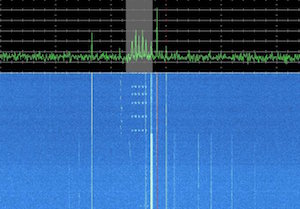 27 May 2016 – The challenge for the worldwide radio amateur community to start listening out for three new orbiting CubeSats was set on 21 April. ESA’s Education Office published the transmission frequencies of the student-built satellites that were about to be launched as part of the Fly Your Satellite! Programme, and invited the radio amateur community to listen out for them.
27 May 2016 – The challenge for the worldwide radio amateur community to start listening out for three new orbiting CubeSats was set on 21 April. ESA’s Education Office published the transmission frequencies of the student-built satellites that were about to be launched as part of the Fly Your Satellite! Programme, and invited the radio amateur community to listen out for them.
The first three radio amateurs to send a recorded signal from AAUSAT4, e-st@r-II or OUFTI-1 would receive a prize from ESA’s Education Office.
Back at the beginning of the Space Race, the Soviet Union would anonymously supply Jodrell Bank radio observatory, UK, with the frequencies needed to hear the signals from its early spacecraft. This allowed the UK astronomers to confirm Russia’s progress to an initially sceptical world in a time of rising international tension.
This new publication of frequencies was designed to stimulate friendly competition and bring the world together. It worked! Hundreds of radio amateurs stretching across the world rose to the task.
The CubeSats started sending signals after their release from the Soyuz VS-14 rocket and the triggering of their automatic activation sequence. Participants from Russia, USA, Poland, France, Belgium, Netherlands, Brazil, Italy, Denmark, and more tuned their antennas and listened.
Thanks to skill and patience on the ground, the winners come from Russia, the United States of America, Germany, and the Netherlands.
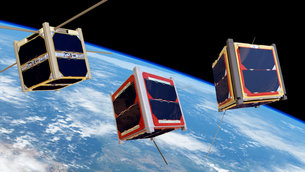 Contact with the first CubeSat came at 00:53:51 UTC on 26 April 2016, within an hour of its separation from the launcher. Dmitri Paschkow, Russia, heard the signal from OUFTI-1 using two receiving stations, in Kemerovo and Ruzaevka. This is not the first time he has been the first to hear transmissions from CubeSats. In 2013, he picked-up Estonia’s ESTCube-1 satellite before anyone else and repeated the feat the following year for the Lithuanian’s LituanicaSAT-1.
Contact with the first CubeSat came at 00:53:51 UTC on 26 April 2016, within an hour of its separation from the launcher. Dmitri Paschkow, Russia, heard the signal from OUFTI-1 using two receiving stations, in Kemerovo and Ruzaevka. This is not the first time he has been the first to hear transmissions from CubeSats. In 2013, he picked-up Estonia’s ESTCube-1 satellite before anyone else and repeated the feat the following year for the Lithuanian’s LituanicaSAT-1.
Upon hearing OUFTI-1, he communicated the news immediately. “I understand that the students are worried [to hear from their satellite] and decided to please them!” says Paschkow.
Just over an hour after the first signal from OUFTI-1 was recorded, the next CubeSat checked in.
AAUSAT-4 was heard over California, US, by Justin Foley of California Polytechnic State University. He had a personal interest in the mission because some of his colleagues had developed the P-POD deployer that was used to eject the CubeSats into orbit.
He was ready at the receiver from the moment of deployment but heard nothing on that first pass, probably because the activation sequence had not yet completed. The signal came through on the second pass, arriving at 02:02 UTC.
“It was extremely exciting to see signals from the newly launched satellite, and witness the beginning of a space mission”, says Foley.
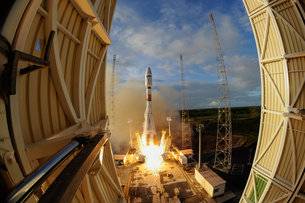 Then the wait began for e-st@r-II. At 05:40:58 UTC, something dimly lit the screen of Mike Rupprecht in Germany. “It is always a good feeling to hear the signals of new satellites. Often the ground station can receive [signals from] their own satellite [only] much later. So the Cubesat teams are very grateful if they get help from the amateur radio community”, he says.
Then the wait began for e-st@r-II. At 05:40:58 UTC, something dimly lit the screen of Mike Rupprecht in Germany. “It is always a good feeling to hear the signals of new satellites. Often the ground station can receive [signals from] their own satellite [only] much later. So the Cubesat teams are very grateful if they get help from the amateur radio community”, he says.
But something was not quite right. It certainly looked like a signal from the last remaining CubeSat,but why was the message so faint? It galvanised the amateur radio community to look harder.
Just a few minutes later, at 05:46 UTC, another signal from OUFTI-1 was received from ESA’s ESTEC centre in The Netherlands, where a little group of ESA engineers were also taking part in the effort to catch the early transmissions of the three “Fly Your Satellite!” CubeSats.
A special mention goes to a young radio amateur who scored a personal best. Twelve year-old space enthusiast Matteo Micheletti from Belgium caught the OUFTI-1 signal with a portable Log periodic antenna and a portable receiver. His triumph occurred on 1 May 2016 between 17:34 and17:39 UTC.
Back on the hunt for e-st@r-II, Jan van Gils, from the Netherlands, has been collaborating with small satellite operators for a couple of years now. He enjoys the fact that he can support them by receiving and decoding their signals. “It is always a trill to hear signals from newly launched satellites and inform the students and researchers that their work is operational,” he says.
Catching the signal from e-st@r-II was not a quick job, however. He had to wait until 2 May at 16:38:05 UTC to receive a signal from e-st@r-II that was strong enough to be decoded. Why e-st@r-II was only transmitting weak signals is under investigation, but the most important news is that all three CubeSats are functioning and transmitting, and their signals can be decoded.
To mark their success, the radio amateur winners will each receive a Fly Your Satellite! Poster, a goodie bag and a scale 1:1 3D printed model of a CubeSat from ESA’s Education Office.
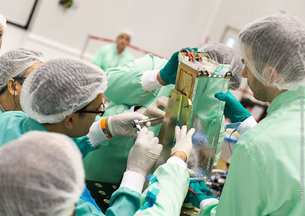 A separate acknowledgement also goes to the three ESTEC telecommunication specialists Alberto Busso, Paolo Concari, and Marco Mascarello, who, during their spare time, worked enthusiastically to support the university student teams in their efforts to catch and decode the early CubeSat transmissions.
A separate acknowledgement also goes to the three ESTEC telecommunication specialists Alberto Busso, Paolo Concari, and Marco Mascarello, who, during their spare time, worked enthusiastically to support the university student teams in their efforts to catch and decode the early CubeSat transmissions.
“Competitions like this help to demonstrate that space is not that far away. We all rely on space for services we use in our everyday lives. The launch and the start of operations of these 3 student-built CubeSats were a terrific success, and I’m delighted that hundreds of people from around the world joined us in the effort to catch their first signals”, says Piero Galeone, Head of Tertiary Education at ESA and Fly Your Satellite! programme manager.
Credits ESA education – Original blog post

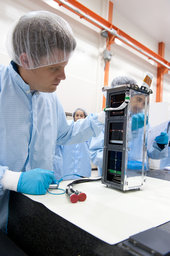
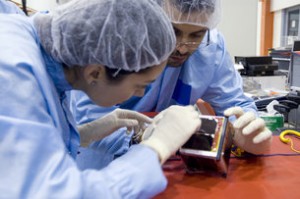
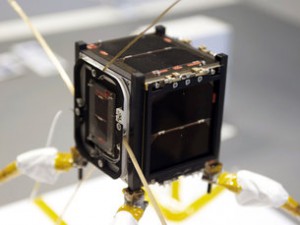
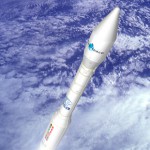 Vega is scheduled to launch on February 13, at 1000 UTC with eight student built amateur radio satellites.
Vega is scheduled to launch on February 13, at 1000 UTC with eight student built amateur radio satellites. 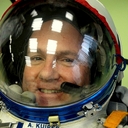 2nd.spaceflight Dec 21st 2011, 13:06 GMT, Soyuz TMA-3M. ISS expedition 30, ESA’s PromISSe mission. Till May 16th 2012.
2nd.spaceflight Dec 21st 2011, 13:06 GMT, Soyuz TMA-3M. ISS expedition 30, ESA’s PromISSe mission. Till May 16th 2012.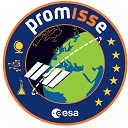 Blog address:
Blog address: